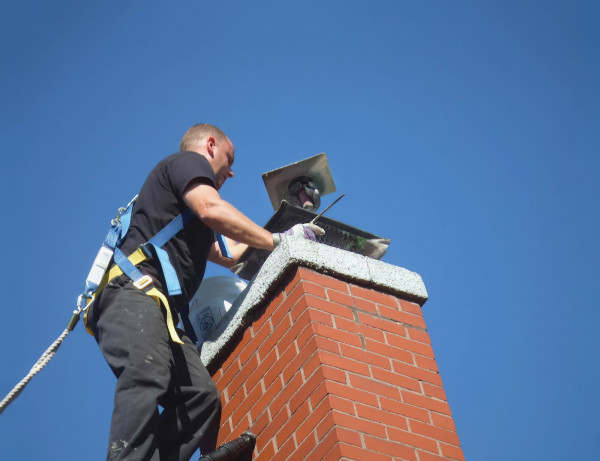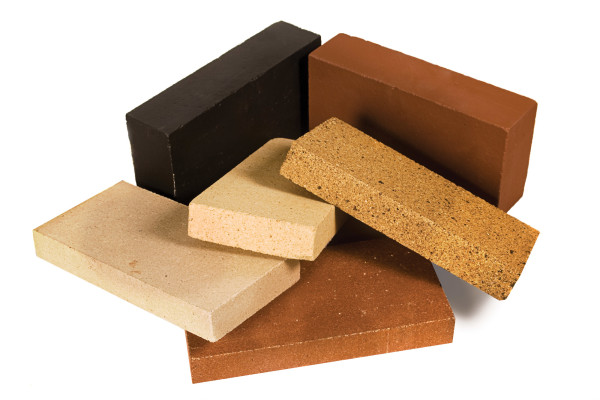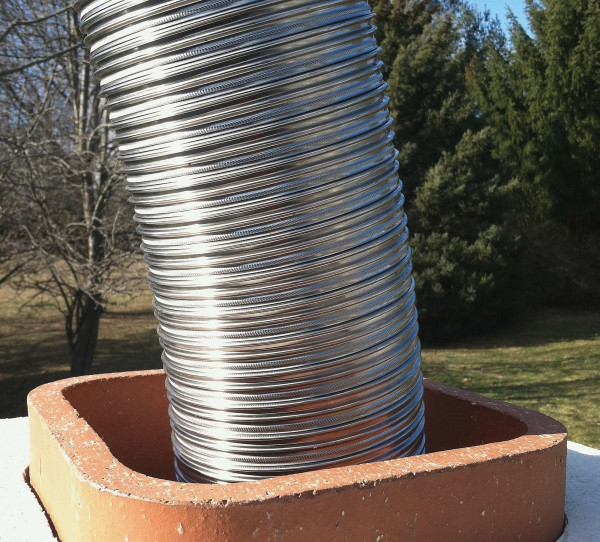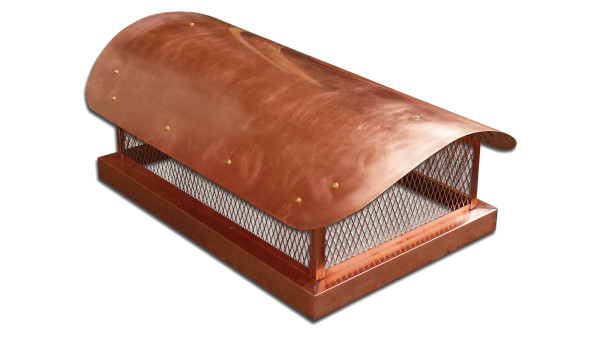This content was originally published on OldHouseOnline.com and has been republished here as part of a merger between our two businesses. All copy is presented here as it originally appeared there.
Chimney Well A roaring mid-winter fire conjures cozy images of hearth and home, but not if the fireplace is smoking, blocked by a bird’s nest-or when the chimney catches fire in the dead of night.
To make the most efficient use of your fireplace (and to prevent potential catastrophe), regular chimney cleanings are a must. Even if the fireplace is used infrequently, have a professional sweep clean it once a year. Fireplaces used more often may need more frequent cleanings. Anyone who burns wood in a fireplace insert or stove knows that the appliance operates better if the chimney is cleaned at least once per winter as well as annually in the off-season.


A safe chimney begins in the firebox, which should be lined with fire brick. The flue should be lined and insulated, either with a traditional masonry liner or a metal or cast-in-place liner. A damper that shuts off the flue when the chimney isn’t in use is essential, too. Last but not least, every chimney should have a cap. Caps made of aluminum, steel, or copper keep precipitation from falling directly into the flue and prevent birds and other wildlife from building nests inside the chimney.
Fire Brick


When you have your flue cleaned, have the sweep inspect the firebox for loose brick, missing mortar joints, or crumbling brick. If any of these warning signs are present, have the box repaired and lined with fire brick (aka firebrick, refractory brick). These fragile, porous bricks are designed to withstand the repeated heating cycles in a fireplace. They also prevent heat transfer from the fire to combustibles in the vicinity of the firebox. Fire brick requires a special refractory cement that holds the bricks together no matter how hot the fire burns.
Liners


Since masonry chimneys can develop cracks and chinks, a liner provides an extra measure of protection against fire. Chimneys in houses built before about 1900 usually received an interior coating of mortar called parging as they were laid up. The parging protected the brick or stonework and mortar joints from the effects of corrosion produced during combustion. Later, many early-20th-century chimneys were built with clay or terra-cotta tube liners that have a lifespan of 50 years or more.
Needless to say, a 200-year-old chimney with original parging and no other liner probably isn’t safe. Similarly, the terra-cotta liners in a chimney built in 1925 are certainly at or past the end of their useful lives.


Replacement alternatives include new terra-cotta tube liners, cast-in-place masonry, and metal liners. Clay liners are still a good option, with one big caveat. Clay is relatively inexpensive, can withstand extremely high temperatures, and holds up well against the corrosive materials that pass through the flue. The trouble, of course, is installation. The old tiles must be chipped and broken out, working from the top of the flue down. Retrofits are particularly problematic if the flue is not perfectly straight.
Cast in place liners are another option for existing chimneys, especially those in historic houses without any kind of liner at all. They’re durable and provide good insulation, helping fires to burn cleaner with less creosote buildup. Most installers have their own proprietary methods of casting the liner.
Metal liners are becoming increasing common, in part because they’re an essential part of most fireplace insert installations. While they’re easy to install, the lifespan of a stainless steel alloy liner is 7 to 10 years, far less than that of masonry liners. Rigid liners can be used in chimneys with straight flues with no offsets or bends, but the more popular flexible liners bend easily around obstructions and produce a virtually seamless flue from top to bottom.
Dampers


Fireplace dampers are essential if you want to keep the house warm in winter when the fireplace isn’t in use. A chimney without a damper will draw heat from the furnace or heated rooms straight up the flue.
Cast-iron dampers are often located in or near the throat of the chimney. If the chimney lacks a top screen or cap, these dampers are subject to rust and can collect leaves and other debris, or bird and squirrel nests. If there is no damper, install one. Rather than placing it in the throat, which is difficult to reach and seal, choose a top-sealing unit. They’re much easier to install, even as a DIY project, and eliminate the need for screening at the top of the chimney.
Chimney Caps


A chimney cap is essential for keeping rain and snow out of the chimney-especially important because the fire brick and refractory mortar in the firebox are vulnerable to water penetration. Chimney caps rest on the chimney crown, a 2³ to 3³ mortar slab poured at the very top of the chimney that covers the top course of bricks or stone. Chimney caps consist of an aluminum, steel, or copper top designed to shed water over a screened grid that keeps wildlife from invading the chimney.
Resources Liners + Caps
¢ Ahrens Chimney ahrenschimney.com Two-liner masonry chimney liners
¢ DuraVent duravent.com Duraflex & other metal chimney liners
¢ Lindemann Chimney Co. lindemannchimneysupply.com Full-service chimney supply
¢ Chimney Savers chimneysaversvt.comCast-in-place and stainless steel liners (VT & NH)
¢ Riverside Sheet Metal riversidesheetmetal.net Custom chimney cap fabrication
¢ Rockford Chimney Supply rockfordchimneysupply.com Chimney parts supply & service
¢ Supaflu Facebook.com/NorthAmerican Supaflu Masonry chimney lining system
¢ Woodland Direct woodlanddirect.com Fireplace, wood stove & chimney products;Seal Tight top dampers
NB: Ratingmania is a place to find the finest discounts on the internet and all the necessities.
Source url todayshomeowner.com
Old House Journal








